50 YEARS OF INNOVATION

On the Cover
 Cody Leong (DDS ’26) and Lajessie Dinh (DDS ’26) collaborate in the new Dental Advanced Simulation Hub (DASH). Read more on page 13.
Cody Leong (DDS ’26) and Lajessie Dinh (DDS ’26) collaborate in the new Dental Advanced Simulation Hub (DASH). Read more on page 13.
Mission Statement
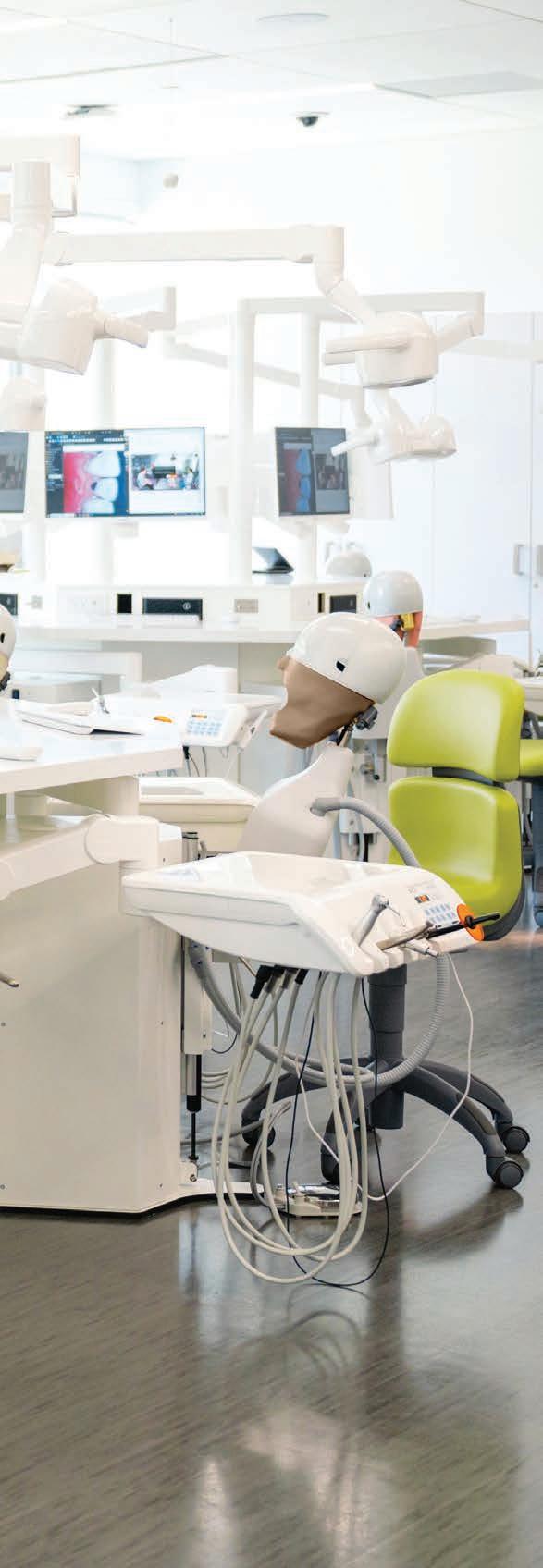


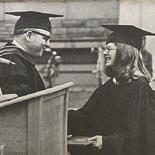
2 A Letter from the Dean 3 History of the School 10 Education 16 Patient Care 18 Philanthropy 20 Research 24 Staff Spotlights 27 Community 30 Alumni Stories 37 50th Anniversary Celebration
The University of Colorado School of Dental Medicine (CU SDM), a collaborative partner on the Anschutz Medical Campus, is a diverse learning, clinical care and research community. The CU SDM is committed to integrated health that innovates, treats and discovers for the well-being of and in service to local and global communities.
Snapshots
First 50 Years
10
Focused at
High Tech and Humanity
New Frontier in Dental Simulation Contents
3 50
of Our
Features
Future
50—Merging
13 Me and My Avatar— A
Dean:
Denise Kassebaum, DDS, MS
Managing Editor:
Laura Ramsey
Contributors:
CU Anschutz Office of Advancement
Gaby Ferreiro-Chavez
Matthew Hastings
Kathy Michel
Laura Ramsey
Robert Thurston-Lighty
Linda Walsh
Design and Illustration:
Ayumi Yasuda
Cover Image:
Corey Davis
Photography: American Dental Education Association (ADEA)
Robert E. Averbach, DDS
Colorado Historic Newspapers Collection

Corey Davis Denver Public Library Special Collections X-11841
Ken Mostek
Laura Ramsey
Colorado’s
After years of perseverance by many dedicated visionaries and Colorado dental luminaries, the University of Colorado School of Dentistry was established in 1973 in the Health Sciences campus bookstore basement at 9th Avenue and Colorado Boulevard in Denver.
In this special edition magazine, we reflect upon a journey that began 50 years ago and has brought us to 2023 as the University of Colorado School of Dental Medicine (CU SDM) on the CU Anschutz Medical Campus in Aurora.
In our historical timeline, “50 Snapshots of Our First 50 Years,” we share our school’s impactful story, focusing on our legacy through faculty, staff, students, architecture, research and program milestones. Innovations throughout our history set the stage for us today and will continue to define the next 50 years.
In the article, “Me and My Avatar—A New Frontier in Dental Simulation,” you will learn about one of the school’s most innovative projects that opened in the spring of 2023, the Dental Advanced Simulation Hub (DASH). The DASH provides all of the latest digital dentistry technologies and simulates interactions between providers and patients using avatars.
You will read about programming and collaborative initiatives across our mission areas—education, patient care, research and community engagement— in the article, “Future Focused at 50—Merging High Tech and Humanity.”
You will be inspired by stories from our distinguished alumni, such as Emanouela Carlson, DDS ’09, who immigrated to the United States at 16 years old and is now an associate professor and department chair at the CU SDM. You will also get to know some of our long-time staff whose impact on the school will continue for years to come.
Our educational programs have trained more than 3,200 alumni, who have treated hundreds of thousands of patients in our clinics and Advanced Clinical Training and Service program sites. Discoveries from our research laboratories have contributed to the scientific foundation of the dental curriculum and have improved the lives of the patients we have been privileged to treat.
Without you, this would not be possible. Thank you for connecting with the CU School of Dental Medicine and for your unique contributions to our past, present and bright future.
With appreciation,
Denise Kassebaum, DDS, MS Dean and Professor
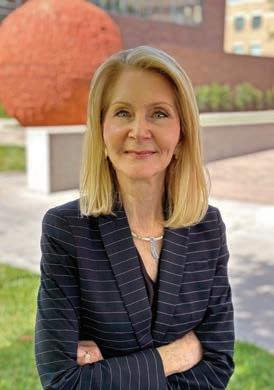
UNIVERSITY OF COLORADO SCHOOL OF DENTAL MEDICINE
2
A
LETTER FROM THE DEAN
only dental school is turning 50!
Published by: The Office
Communications Printed by: CU Anschutz Printing Services
of
Snapshots of Our First 50 Years
Celebrating the people, programs and milestones that have helped shape our school.
By: Laura Ramsey
1922
In the spring, the Colorado Legislature authorizes initial capital construction and operating funds. Governor John A. Love signs the appropriation bill. Observing the ceremony are, left to right: Dr. Leslie R. Burrows, dental education consultant to the University; Dr. Donald J. Walden, director of the Dental Foundation of Colorado and former president of the Denver Metropolitan Dental Society; and Dr. William H. Hiatt, president of the foundation.

1967
1957
Regents of the University of Colorado unanimously approve the establishment of a dental school, but it would be nearly two decades before the School of Dentistry opened.
1964

The Dental Foundation of Colorado is established to foster dental education. Then-President William Hiatt, DDS, also served as chairman of the dental school advisory committee and played an important role in rallying citizen and professional support for the opening of the dental school.
1967
In August, the Board of Regents appoints Leslie “Les” R. Burrows, DDS, PhD, as founding dean of the school. On December 7, the Council on Dental Education of the American Dental Association classifies the school as eligible for accreditation.
Leslie
“Les”
R. Burrows, DDS, PhD
3 FIFTY YEARS OF INNOVATION • 1973–2023
50
An amendment to the Colorado state constitution is authorized to establish a dental school in Colorado.
WHERE IS HE NOW?
A University of Colorado Denver newspaper clipping reads, “‘There’s not another dental school from Lincoln, Nebraska, to Los Angeles, California,’ according to Dr. Leslie R. Burrows, dean of the University of Colorado School of Dentistry... . ‘In Colorado there are 13 counties which have no dentists at all,’ added Dr. Burrows. ‘Not only is there a need for dentists across the country, but there is also a need for the institutions in which to train them.’”


1973
An article in The Denver Post reads, “A 12-year-old Littleton boy is the first applicant for admission to the University of Colorado School of Dentistry now taking shape at the CU Medical Center.” His letter to Dean Burrows said, “As far back as my first filling I have wanted to be a dentist.”
1968
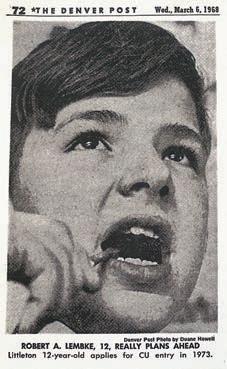
Dental Hygiene Program
More than 500 students graduated from the Dental Hygiene program from 1973 to 2009.
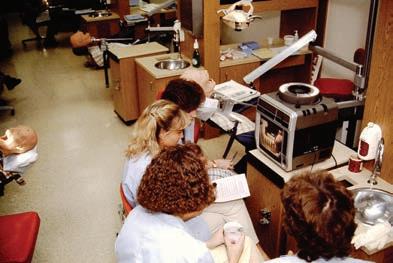
National Board Dental Hygiene Examination (NBDHE) scores were consistently among the highest in the country. In 1999, the graduating class ranked #1 out of 215 dental hygiene programs for student performance on the NBDHE.
SDM Professor Emerita and former Dental Hygiene Program Co-Director Terri Tilliss, PhD, MA, MS, RDH, said, “It was an advantage that both dental students and dental hygiene students could learn to work together as a team. It gave them a familiarity that optimally prepared them for clinical and public health settings after graduation.”
A sculpture titled “Synergy” stands in the lobby of the SDM building. It was dedicated in 2012 to symbolize the important role the program played in our school’s foundation. The plaque reads, in part, “We honor the teamwork and synergistic relationships that made up the Dental Hygiene program during its 36 years of existence, and celebrate the students, faculty, staff and patients that contributed to the program.”
The University of Colorado School of Dentistry opens its doors to DDS and hygiene students, first located in the basement of the bookstore at 9th Avenue and Colorado Boulevard.
1973
1975

The

1976

4 UNIVERSITY OF COLORADO SCHOOL OF DENTAL MEDICINE
Thomas J. Bomberg, DDS, becomes the dental school’s second dean.
first class of 16 students earns their bachelor of science degrees in dental hygiene.
Dental Hygiene Program Director Gail Cross, left, assists Dean Les Burrows, DDS, PhD, in awarding a diploma to valedictorian Ava Healey Boqody.
Twenty-five graduates receive their Doctor of Dental Surgery (DDS) degrees at the school’s first DDS commencement ceremony. Some members of the Class of 1977 are pictured here, including Scott Minnich, George Gatseos, Brant Bradford, Irene Holloman and Thomas Marschner.
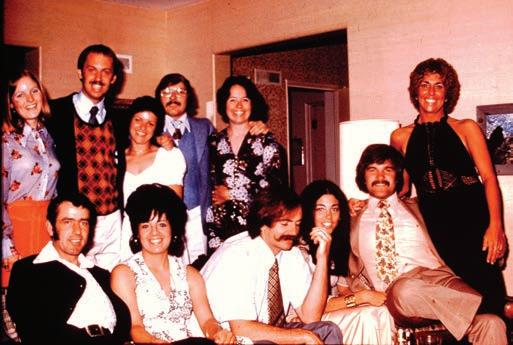
1977
SEE
The Advanced Clinical Training and Service (ACTS) program, one of the first programs of its kind at a dental school in the United States, is established.
1985
William Henry Kunst gets a new smile from the CU School of Dentistry and is so pleased that he decides to show his thanks with a sign in front of the dental clinic. The gentleman talked to everyone about the resolution of 33 years of dental problems.

1976
1976
The School of Dentistry building is completed, with 50 operatories, an oral cancer detection clinic, technique laboratories, classrooms and administrative offices. In-state tuition was $9,416 for the DDS program and $3,852 for the Dental Hygiene program.

1976

The dental school’s football team, originally the Tooth Mechanics, changed their name to the Molar Machine and finished the season with a winning record of 7-2.
1979
The General Practice Residency (GPR) program is established and welcomes its first cohort of residents.
1988
1981

Lawrence H. Meskin, DDS, MSD, MPH, PhD, is named the third dean of the school.
“Dentistry’s mandate as a health profession is to advance the public’s oral health status. As the sole purveyors of dental care, dentistry has the obligation to continually seek new knowledge that will enhance its mission.”
5 FIFTY YEARS OF INNOVATION • 1973–2023
PAGE 27
David G. Gardner, DDS, MSD, becomes the fourth dean of the dental school.
A grant from the National Center for Research Resources allows the school to build nearly 11,000 square feet of craniofacial and oral health research space on the 11th floor of the Research Complex 1 south tower on the newly developed CU Anschutz Medical Campus. This also improves accessibility for enhanced collaboration and translational research endeavors with colleagues from the CU School of Medicine.
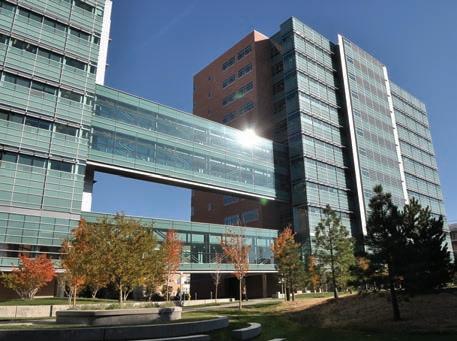
2002
Robert E. Averbach, DDS, becomes the school’s fifth dean.
“The University of Colorado is proud of its tradition of education excellence and innovation. Small class size, personalized instruction from world-class faculty and modern facilities as part of the dynamic CU Health Sciences Center, all combine to make the CU School of Dentistry a jewel in the setting of the magnificent Rocky Mountains.”
1989
The National Institute of Dental Research adds craniofacial development to its portfolio, becoming the National Institute of Dental and Craniofacial Research (NIDCR). This stimulates a change in research direction at the dental school, increasing research on human craniofacial birth defects such as cleft lip, cleft palate, micrognathia (small lower jaw) and hemifacial microsomia (asymmetric facial development).
1998
1990
Dentistry tops the list of “Hot Careers with a Bright Future” in The Denver Post
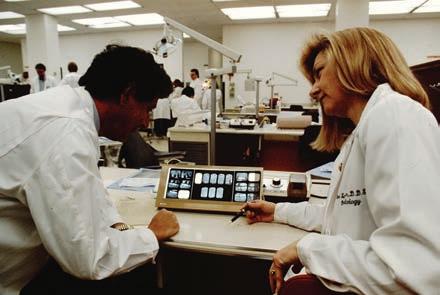
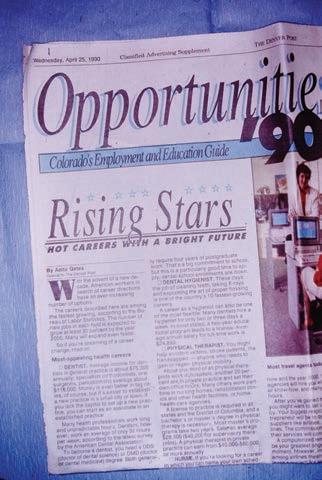
1999
The Ira C. Brownlie Endowed Chair in Craniofacial Molecular Biology is established with an estate gift from his daughter Elizabeth Timpte to honor Brownlie’s distinguished career in dentistry and to support the SDM research faculty studying craniofacial biology.
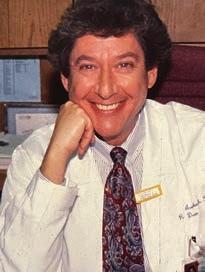
1999
Howard M. Landesman, DDS, MEd, is named the sixth dean.
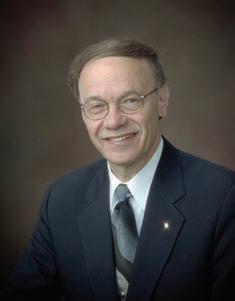
“As we look to the future, I predict that we will have an exceptional ability to weather the challenges of a changing profession and a changing world. To successfully meet the road ahead is a hard one, but there is every reason to believe that the next century will be as productive for dentistry as this one has been.”
2004
The dental school introduces its Graduate Orthodontics program.
6 UNIVERSITY OF COLORADO SCHOOL OF DENTAL MEDICINE
Drs. Averbach and Kassebaum examine radiographs in the dental school.
Dental students begin attending classes in the new stateof-the-art Center for Oral Facial Health located at the former Fitzsimons Army Medical Center in Aurora. Drs. Landesman (right) and Kassebaum (center) demonstrate the new facilities for CU President Hank Brown (left).
2005 2005
The Frontier Center for Interprofessional Education is established with a generous donation from Delta Dental of Colorado Foundation to provide hands-on interprofessional learning opportunities in dental medicine for thousands of medical, pharmacy, nursing and other health profession students, residents and practitioners.
2005
The Advanced Standing International Student Program (ISP) is established, welcoming dentists from around the world to earn their Doctor of Dental Surgery and practice in the United States.
2006
CU SDM alumnus and faculty member John Raabe, DDS ’90, and his father, also a dentist, created the Generations Clinic Fund to increase access to dental healthcare for seniors and inspire students to work with older adults for years to come.
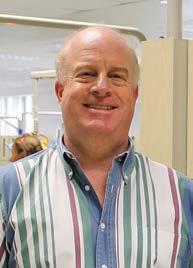
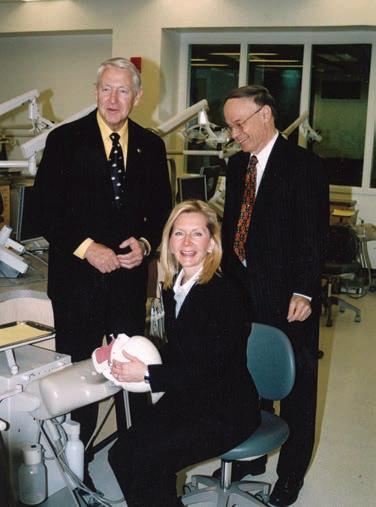
“I enjoy seeing the good work that the students provide, especially life-changing treatment with the Generations Clinic patients.”
2007
The school welcomes its first Graduate Periodontics program residency class.

2007
The NIDCR establishes the FaceBase initiative to create a critical information repository for important data to understand facial development and human facial birth defect pathology. Members of the dental school as well as other leaders on campus take on critical roles in FaceBase, making it successful over the next 10 years through original research.
2009
The Fitzsimons campus is renamed the University of Colorado Anschutz Medical Campus in recognition of more than $90 million in donations from The Anschutz Foundation to help in the construction of brand-new education, research and patient care facilities on the grounds.
2006
Denise K. Kassebaum, DDS, MS, becomes the seventh dean and the first female dean to lead the School of Dentistry.
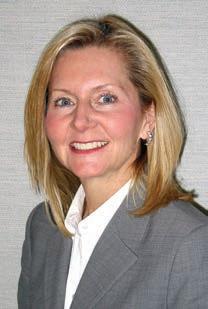
2008
The CU School of Dentistry changes its name to the University of Colorado School of Dental Medicine to reflect its expanded mission.
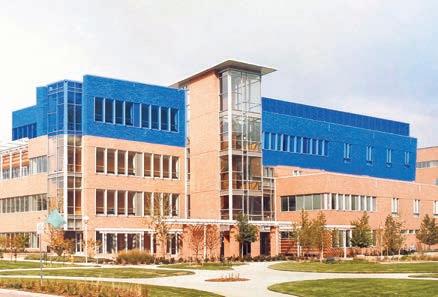
2012
The dental school launches its “Growing to Serve” initiative with the completion of renovations to the new building, adding 20,000 square feet and 68 more dental operatories. Class sizes increase from 52 to 80 (DDS) and from 12 to 40 (ISP).
7 FIFTY YEARS OF INNOVATION • 1973–2023
The dental school partners with CU School of Medicine and Johnson & Wales University to offer an interprofessional elective course in Culinary Medicine and Dental Medicine to connect nutrition and chronic disease prevention.
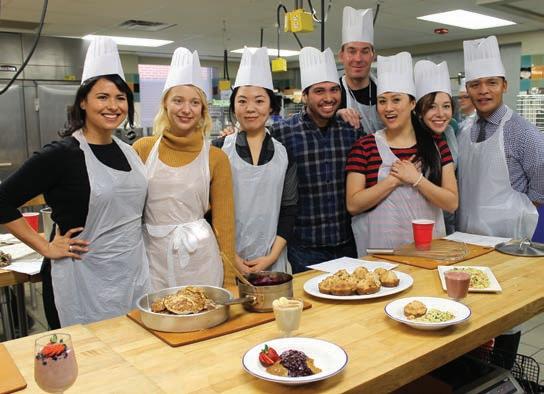
2017
The CU School of Dental Medicine receives the William J. Gies Award for Vision, Innovation and Achievement for Outstanding Innovation with its Frontier Center program. Only one dental school is selected annually for this honor.
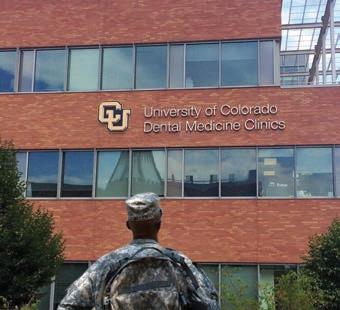


2013
2014
The Heroes Clinic is established through a generous gift from Delta Dental of Colorado to provide free dental care for CU Denver and Anschutz student veterans. We are proud to have served more than 1,500 veteran patients.
2014
William D. Bailey, DDS, MPH, is appointed by the CU SDM as the inaugural Delta Dental of Colorado endowed chair in Prevention of Early Childhood Caries.
SEE PAGE 35
2014
The first cohort of SDM faculty and students travel to Guatemala to provide dental care as part of the CU Guatemala Smiles project.

2018
The SDM is among the nation’s first dental institutions to introduce virtual reality and haptics technology as part of students’ dental education in the Immersive Learning Suite.
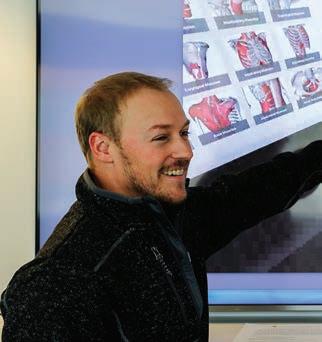
8 UNIVERSITY OF COLORADO SCHOOL OF DENTAL MEDICINE
The Nassimbene Family Endowed Scholarship Fund is established. Jack Nassimbene, DDS, advocated tirelessly at local and state levels and was instrumental in raising the funds needed for the creation of our dental school.
2019
As part of the NIDCR’s FaceBase, the first single cell map of the fusing of facial prominences is published by a research group based in the SDM Department of Craniofacial Biology, providing unprecedented information on this process relevant to birth defects research.

2019
Numerous SDM faculty are contributors, including co-project directors Bruce Dye, DDS, MPH, and Judith Albino, PhD, for the National Institutes of Health report Oral Health in America: Advances and Challenges, which explores the nation’s oral health over the last 20 years.
2020
READ THE REPORT
The CU Anschutz Medical Campus is ranked globally as a top university for innovation.
2022
SEE PAGE 16
The revitalized Senior & Special Care Clinic is established to treat older adults who have other health concer ns as well as patients (16 years and older) with cognitive, developmental, medical and physical conditions that may limit their ability to receive routine dental care.
2023
2020
In the midst of unprecedented clinical and educational changes due to the COVID-19 pandemic, the SDM and the Colorado School of Public Health launch a Doctor of Dental Surgery and Master of Public Health dual degree program.
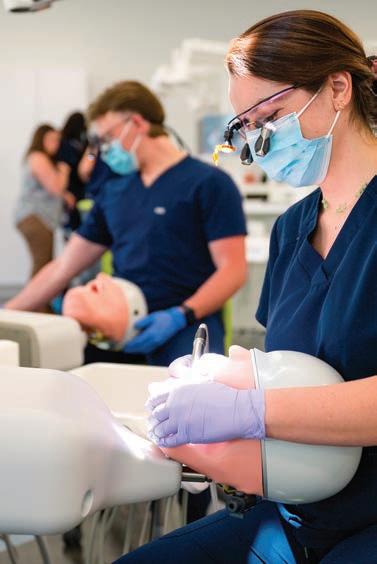
2021
The school is pleased to be recognized as an Apple Distinguished School for 2021–2024 for its continuous innovation in learning, teaching and the school environment.

2021
SEE PAGE 20
A CU SDM research team creates the first, targeted antibacterial and regenerative coating in dentistry, earning funding from the National Institutes of Health and the Gates Grubstake Fund to continue their research.
2023
The Dental Advanced Simulation Hub (DASH) opens on campus.
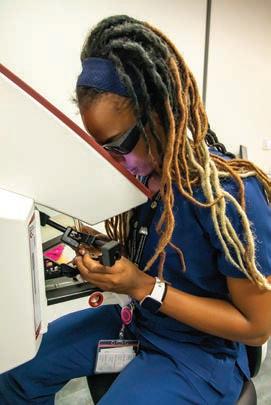
SEE PAGE 13

9 FIFTY YEARS OF INNOVATION • 1973–2023
Future Focused at 50—Merging High Tech and Humanity
By: Robert Thurston-Lighty
As with all forms of healthcare, dentistry is changing rapidly. Factors such as new technologies, higher-quality data and a wider adoption of person-centered care models make our healthcare systems more cost-effective while delivering better outcomes.

Fundamentals for the Future
“A focus on person-centered care is critical to educating future-ready graduates,” said Dean Denise Kassebaum, DDS, MS. “It’s at the root of every initiative in the school-wide innovation agenda we are pursuing. It’s what our professors are passionate about teaching. And it’s why our students want to study here in our school-based and community-based care settings.”
For the SDM, that means striving to increase the diversity of faculty, staff and learners as the demographics of communities in the United States change. It means integrating oral and systemic healthcare through interprofessional interactions as our health systems change. It also means deploying artificial intelligence (AI) and other emerging technologies to teach students how to perform clinical assessments and procedures that allow providers to customize treatment for a patient’s unique needs.
The World Health Organization frames the global challenge as fundamentally changing the basis of patient engagement from “What’s the matter with you?” to “What matters to you?” The system-wide implications for healthcare include rethinking how healthcare services are organized, managed and delivered.
10 UNIVERSITY OF COLORADO SCHOOL OF DENTAL MEDICINE
EDUCATION
award from the NIDCR in July 2022 totaling more than $2.3 million across five years.
Professor Bruce Dye, DDS, MPH, is the Delta Dental of Colorado Foundation Chair in Oral Health Equity and Chair of the Department of Community Dentistry and Population Health. He framed the problem this way: “People experience oral health differently not because of actions directly related to their teeth, but as a result of other determinants of health—physical, genetic, socioeconomic, behavioral. We’re equipping our students with a much greater understanding of the underlying causes of disease while also helping them appreciate that empathy for the whole person is essential to high-quality care.”
The SDM currently conducts research in nine areas ranging from biomedical sciences and cancer biology to human medical genetics and pharmaceuticals. Graduate students work with SDM research faculty who hold joint appointments in the CU School of Medicine, and postdoctoral fellows can apply to work directly with individual research faculty members. Incoming first-year dental students have the opportunity to apply for the Summer Research Scholarship Program, an eightweek immersion in basic science or clinical research with an SDM faculty mentor. In 2023, the school hosted its 38th annual Research Day featuring five plenary presentations and dozens of student researchers at an afternoon poster session.
Cutting-Edge Research Ecosystem
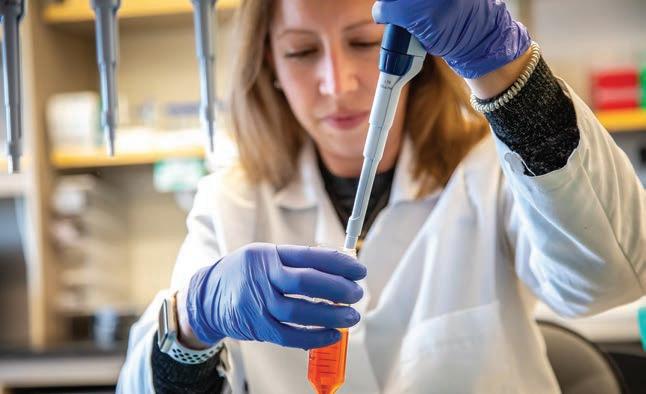

Dye’s research activities in oral health epidemiology and public health practice are part of a larger SDM research ecosystem that comprises community dentistry and population health, craniofacial biology, diagnostics and surgery, and orthodontics as well as pediatric, digital and regenerative dentistry. “Our entire dental school community benefits greatly from the SDM’s collocation with CU schools of medicine, nursing, pharmacy and public health,” he explained.
New research projects are funded through the SDM’s Innovation Committee, which supports work in areas such as precision biomaterials, biobank sampling of craniofacial differences and AI-guided diagnostics and decision-making. “The push for advanced technologies in dental practice is coming from practitioners,” said Senior Associate Dean for Research Jeffrey Stansbury, PhD. “They experience the advantages of digitally derived processes firsthand, and they recognize that technologies like additive manufacturing can increase patient access, improve outcomes and reduce costs. Keeping research at the forefront of our mission is critical to ensuring that our students are practice-ready when they graduate.”
A Focus on Digital Dentistry
With the commitment of the administration, the SDM Innovation Committee set a goal of acquiring digital technologies to enhance patient care and preclinical and clinical education experiences. This commitment ensures that cone-beam computed tomography (CBCT) machines are available on all floors of the clinical building, and that students and residents are continuously introduced to new digital technologies.
Facilities that support these technologies include the Digital Design Studio (DDS) and the Dental Advanced Simulation Hub (DASH).
Led by Digital Dentistry Program Director David Gozalo, DDS, MS, and through the efforts of other faculty and staff, the DDS opened on level 2 of the dental school. This resource features the latest technology in 3D printing and milling machines connected to the latest design software.
11 FIFTY YEARS OF INNOVATION • 1973–2023
Samantha Wieland (DDS ’24) and Associate Professor (Flora) Monique M. Phipps, DDS, see a patient in the Student Clinic.
Bruce Dye, DDS, MPH, talks with students about public health dentistry as a career.
Research from the laboratory of Assistant Professor Katherine Fantauzzo, PhD, served as preliminary data for an R01
While the DDS supports clinical activities, the DASH is the preclinical facility where students learn to produce start-to-finish digital solutions for future patient care.
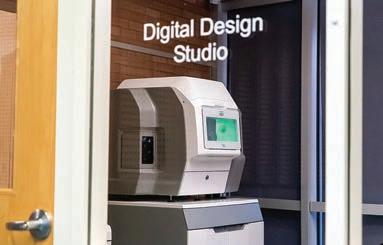
Reinventing Educational Platforms
On the pedagogical front, Senior Associate Dean of Academic Affairs and Innovation Tracy de Peralta, DMD, PhD, MClinEd, and her colleagues are equally ambitious in their innovations. “When it comes to educational tools and methods,” she said, “we are developing approaches to teaching and learning that are as immersive and tech-savvy as the work of our research colleagues. We practice education itself as an evidence-based science here.” That mindset has led to recognition of the SDM as an Apple Distinguished School for its continuous innovation in learning, teaching and the overall school environment.
De Peralta and her SDM colleagues also partnered with the CU Anschutz Office of Strategic Initiatives to introduce the campuswide Education Studio, an initiative that encompasses all six schools and colleges on the CU Anschutz Medical Campus. Recent SDM projects include one of the first virtual reality suites among U.S. dental schools, an immersive learning suite with haptics technology and the DASH.
Taking Service to a New Level
Another pillar of the SDM’s future rests on the human-centered values that have defined it for half a century. “Our dedication to service is well known and very attractive to applicants,” said Associate Dean of Student Affairs and Admissions Eric
Mediavilla, DDS ’00. “We deliver on our commitment to members of surrounding communities with numerous programs that teach our students to respect and value every person who sits in their chair. They learn trust-building and personcentered decision-making right along with the mastery of technical skills.”

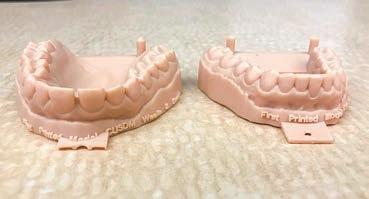
One of the SDM’s community-based programs, the Advanced Clinical Training and Service (ACTS) program, allows students to perform hundreds of treatment procedures and patient visits by the time they graduate. A significant number of students have reported an interest in continuing to treat underserved populations and an intention to practice in the public sector after graduation. SDM students also have opportunities to deliver additional pro bono or low-cost services through the Colorado Mission of Mercy (COMOM), Kids in Need of Dentistry (KIND) and wellness events in surrounding communities.
“As the socioeconomic and cultural landscape continues to evolve in the U.S., our students will be ready and willing to do their best to expand access to high-quality care at sustainable costs,” Mediavilla explained. “At the same time, we are teaching them to care for their own well-being. We want every individual to grow as a human being during their time with us. Their self-worth doesn’t rest solely on academic or professional achievement in this demanding profession. If we do our jobs in honoring the whole person, our graduates will be better prepared to honor the whole person of every patient who crosses their path. That’s one of the most important things we can do for the future of dentistry.”
12 UNIVERSITY OF COLORADO SCHOOL OF DENTAL MEDICINE
Esraa Salem, DDS (ISP ’22), BDS; Assistant Professor Manti Lehn, RDH ’06; and Ashjan Hasan, DDS (ISP ’22), BDS, volunteer at COMOM 2022 in Pueblo, Colorado.
The Digital Design Studio features state-of-the-art milling and 3D printing technologies.
EDUCATION
Me and My Avatar—A New Frontier in Dental Simulation
By: Robert Thurston-Lighty
Imagine having the opportunity to join a multidentist practice during your first days in dental school. Imagine that within that practice, you are able to establish a long-term relationship with a patient whose evolving case and progress is your responsibility throughout your entire dental education. Now imagine that your patient is an avatar with a complex mixture of social, medical and dental histories and challenges that develop in response to your treatment decisions.
Such experiences would have sounded like sci-fi fantasy to previous generations of dental school graduates. For students at the University of Colorado School of Dental Medicine (CU SDM), however, that precise scenario is now a reality in the school’s new Dental Advanced Simulation Hub (DASH). Opened in the spring of 2023, the DASH is the product of an ambitious innovation agenda that supports multiple initiatives throughout the school’s curriculum and operations. “We are known for advancing new technologies that have the potential to enhance educational experiences, expand access and ultimately improve patient outcomes,” said SDM Dean Denise Kassebaum, DDS, MS. “The DASH is the latest manifestation of that school-wide commitment.”

13 FIFTY YEARS OF INNOVATION • 1973–2023
The launch of the DASH also marks the culmination of a multi-year brainstorming, planning and implementation process fueled by the insights and enthusiasm of SDM faculty, staff, students and consultants. Senior Associate Dean of Academic Affairs and Innovation Tracy de Peralta, DMD, PhD, MClinEd, noted, “The DASH is a product of our entire community. Faculty such as Dr. James DeLapp, Dr. Doug Wilson and others from the Simulation Innovation Task Force at the SDM have put forth great efforts in considering new paths to curriculum in this space.”
DASH-ing into the Future
When they enter the DASH for their lab sessions, students encounter a groundbreaking suite of simulation curricula and tools that represent the future of dental education and practice— a deployment of hardware, software and workstations unlike anything else. Instead of traditional lab benches and instructor’s podium, the space comprises eight pods with four to six patient simulation stations and avatars per pod. A shared conference table in the center of the lab supplants the traditional podium as the place where students and instructors gather to debrief on the day’s activities.
Each pod represents a virtual dental practice staffed by students who manage their collaborative endeavor through a shared website. “The professional-office component of a pod adds another layer of veritas to the simulations,” noted de Peralta. “Pod colleagues can cover for one another during an unavoidable absence, for example, or consult on each other’s cases. We also have the ability to simulate the need for an emergency appointment by sending an electronic notice through the patient portal the night before a regularly scheduled lab session.”
The physical components of a pod include four to six simulation stations (42 in total), each with an adjustable-height patient head and torso (referred to as dental simulators) that students work on as they would a patient. The 42 stations contain all the necessary equipment—power and data ports, digital monitor, dental light, curing light, intraoral camera—to deliver the services

you would find in a typical dental clinic. Each station also features a five-position instrument panel with compressed air, two airdriven motor positions for high- and low-speed instruments and an electric motor position for endodontics and other applications.
Associate Professor David Gozalo, DDS, MS, has been instrumental in planning for the integration of scanning, designing, milling and 3D printing technologies in the space. All computers in the DASH have digital design software to go along with these digital dentistry technologies which are the same as those in clinical care settings.
“Beyond the individual simulation stations, we’ve outfitted the DASH with a full complement of the shared equipment you’d find in a contemporary dental office,” said Facilities Manager Todd Hinshaw. “Intraoral x-ray boxes and digital sensors, digital scanners, milling machines, furnaces—technologies that support a wide range of basic and advanced skills practice. And, of course, we have ample storage for small equipment, shared instruments and instructional materials as well as several work sinks.”
The Humanity Behind the Avatars
What truly brings the 42 dental simulators to life are their avatars—software personas that deliver dynamic social, medical and dental patient histories to each workstation. Assistant Professor and Director of Diversity Programming Amisha Singh, DDS ’15, has devoted countless hours to constructing a highly diverse patient population that reflects society at large. Her software creations are constructed using extensive, anonymized case data from actual, de-identified patients and distribute unique sets of avatars to each DASH pod.
“The software implemented by Dr. Singh, with the help of Program Director of Digital Education and Academic Technology Michael Lampe, enables us to establish one-to-one relationships between students and patient avatars,” de Peralta explained. “We can standardize case difficulty and progression across the entire DASH cohort and ensure that each pod is learning the same techniques while dealing with similar challenges. And because every student maintains a treatment relationship with their virtual
14 UNIVERSITY OF COLORADO SCHOOL OF DENTAL MEDICINE
THE DASH IS A PRODUCT OF OUR ENTIRE COMMUNITY.
patient throughout their education, they gain more skills related to case completion than if they were just working on traditional typodont models within the dental simulator.”

A Stronger Transition to Live Dentistry
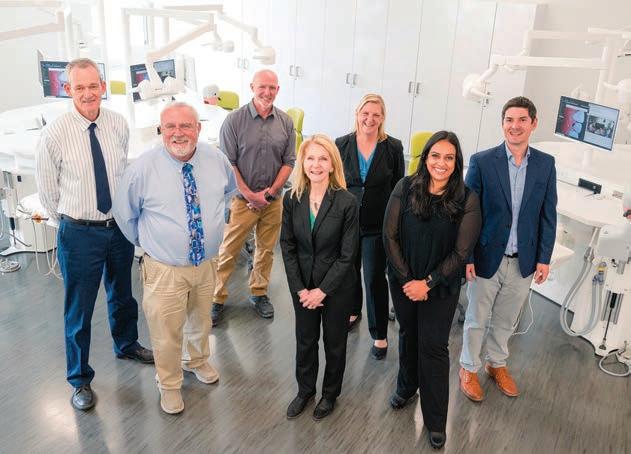
The ultimate goal of all simulation training is to prepare students to work safely, competently and confidently with the live tissue and life circumstances of real patients. In that sense, the DASH is a huge leap forward in dental education. The complex human dynamics embodied by the avatars enables students to practice the holistic skills of dentistry— behavioral psychology, public health, critical thinking, medical ethics—well before they encounter live patients.
Avatar-enhanced simulations also lead to greater patient safety, according to de Peralta. “The DASH doesn’t replace the experience students gain by applying their knowledge and skills to real patients. It does, however, greatly improve the quality of students’ transitions from simulation to reallife dentistry because the DASH environment replicates so many aspects of a typical clinical environment. Students will feel much more at home in live environments, and we can confidently provide them with earlier and more frequent access to live patients with increasingly complex treatment requirements over time.”
As is the case with all aspects of the SDM’s innovation agenda, the DASH is not about technology for technology’s sake. “Our mission is to transform the landscape of care,” de Peralta said. “To accomplish that, we must graduate practitioners with behavioral and cultural competencies that are useful in both high- and low-tech environments. The multidimensional, longitudinal simulations we provide with the DASH are a key part of producing future-ready dentists for all populations and locations.”
Task Force:
• Emanouela Carlson, DDS ’09
• Tracy de Peralta, DMD, PhD, MClinEd
• James DeLapp, DDS ’82, MS
• David Gozalo, DDS, MS
• Thomas Greany, DDS ’97
• Todd Hinshaw
• Kunjan Kakar, DDS (ISP ’10), MS, BDS
• Denise Kassebaum, DDS, MS
• Michael Lampe, EdD
• Eric Mediavilla, DDS ’00
• Jennipher Murphy, MS
• Chaitanya Puranik, PhD, MDS, MS, BDS
• Amisha Singh, DDS ’15
• Doug Wilson, DMD, MS
15 FIFTY YEARS OF INNOVATION • 1973–2023
The opening of the DASH would not have been possible without the members of the SDM Simulation Innovation
LEFT TO RIGHT: Wilson, DeLapp, Hinshaw, Kassebaum, de Peralta, Singh and Lampe.
“It feels like you’re the only one. They (CU Dental providers) care.”
First patient begins treatment in CU Dental’s Senior & Special Care Clinic
By: Kathy Michel
When Lise Gresock, 88, came to the University of Colorado School of Dental Medicine (CU SDM), she was hesitant and nervous. For decades, she had not had a great experience going to the dentist. While Gresock liked her previous dentist, she wanted a more conservative treatment option. When she met the SDM team of Sarah Dirks, DDS, and Elena Ciobanu, DDS (ISP ’22), BDS, Gresock was immediately at ease.
“It’s an incredible team. I’m overwhelmed by the wonderful care I have received here,” shared Gresock. “My whole life, I’ve feared dentists. I was told my teeth were too big for my jaw at a young age. By the age of 20, my teeth fit after pulling some. One of my previous dentists wanted to put crowns on all my teeth. My dental treatments were very expensive, and it was during the war, so I decided against crowns and was passed off to another dentist.”
Gresock’s current dental treatment plan requires a complex coordination of care and communication with her primary care doctor and other specialists at the dental school. The team at the SDM is accustomed to it in the Senior & Special Care Clinic (SSCC).
Senior & Special Care Clinic
“We focus on conservative treatment plans that align with each patient’s goals. Our team interacts with other healthcare professionals when needed to provide the most appropriate person-centered
PATIENT CARE
care,” said Dirks. “We understand that it can be difficult to get to the dentist physically, so we try to maximize each appointment.”
The SSCC is now a joint clinic. The special care portion of the clinic began in the 1980s, while the senior clinic started in January 2023. Gresock was the first patient in the SSCC.
Vision for the Senior & Special Care Clinic
The school has always treated older adults, but now there’s an emphasis on having a dedicated, accessible clinical space for patients.
The vision for this particular clinic is to:
• Offer mobile dental services to long-term care facilities;
• Become a training site for future geriatric dental fellows; and
• Provide collaborative research opportunities with referring geriatricians from the SSCC.
“We want to become the clinical, teaching and research center of excellence in geriatrics and special oral healthcare in the Rocky Mountain region,” said Bruce Dye, DDS, MPH, professor and chair in the Department of Community Dentistry and Population Health.
The SSCC team includes an esteemed group of oral health experts:
• Sarah Dirks, DDS;
• Susan Somerset, DMD, PharmD, MS;
• Ali Kessler, RDH;
• Amy Schmidt, patient coordinator; and
• Bruce Dye, DDS, MPH.

16 UNIVERSITY OF COLORADO SCHOOL OF DENTAL MEDICINE
IT’S AN INCREDIBLE TEAM. I’M OVERWHELMED BY THE WONDERFUL CARE I HAVE RECEIVED HERE.
“Patients can expect that our team has experience with overcoming the barriers to care that exist for older adults,” said Dirks.
Since the SDM is a learning environment, students also treat patients in the clinic under faculty supervision. “Our goal is to provide students with a strong foundation on which to continue to build their skills in managing patients with complex needs,” shared Susan Somerset, DMD, PharmD, MS.


It is something that the faculty members see as a benefit to the student-patient interaction.

“I love seeing students get inspired and excited when they realize that many of the barriers to care for older adults can be overcome,” Dirks said. “Older adults are often the best patients and are very grateful that our team will take the ‘extra measures’ necessary to provide care.”
Those “extra measures” are what Gresock noticed about the dental team after being a patient at the school for just six months. “It feels like you’re the only one. They care.” She said the dental team has been instrumental in her care during the short time she has been a patient at the school. Gresock expressed her gratitude to the team and was eager to start her treatment plan.
17 FIFTY YEARS OF INNOVATION • 1973–2023
LEARN MORE about the Senior & Special Care Clinic: dental.cuanschutz.edu/SSCC
Susan Somerset, DMD, PharmD, MS, and Sarah Dirks, DDS, work together in the Senior & Special Care Clinic.
Elena Ciobanu, DDS (ISP ’22), BDS, and Sarah Dirks, DDS, discuss Lise Gresock’s oral health and treatment plan.
SCHOOL OF DENTAL MEDICINE
Philanthropy
CU Anschutz Office of Advancement
Philanthropy powers the University of Colorado School of Dental Medicine (CU SDM). Over the past 50 years, gifts from community members and organizations have helped us educate a future-ready dental workforce, provide person-centered care and research innovative treatments and technologies.
$2.4M RESEARCH
$2.8M FINANCIAL AID
December 31, 1984 ($26,000) FIRST ENDOWMENT GIFT
$10.6M TOTAL ENDOWMENT VALUE (AS OF MARCH 2023)
3,211 TOTAL BENEFACTORS
2,729 INDIVIDUALS 482 ORGANIZATIONS
$5.7M TOTAL GIFTS TO CU SDM ENDOWMENTS
94 TOTAL GIVING FUNDS ESTABLISHED
$4.2M CAPITAL (EQUIPMENT, GIFTS-IN-KIND, LAND, BUILDINGS)
18 UNIVERSITY OF COLORADO SCHOOL OF DENTAL MEDICINE
$191K UNRESTRICTED/ OTHER
$22.5M
GRAND TOTAL OF COMMITMENTS
$8.3M ACADEMIC (INCLUDING CHAIRS)
$4.7M PUBLIC SERVICE AND OUTREACH
Your support helps us fulfill our commitment to being a transformational dental institution.
To make a gift to the CU School of Dental Medicine Innovation Fund, please scan the QR code. Or visit: giving.cu.edu/sdm-innovation
MAKE A GIFT
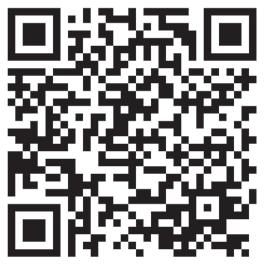
19 FIFTY YEARS OF INNOVATION • 1973–2023
CU Dental Team Creates First, Targeted Antibacterial and Regenerative Coating in Dentistry
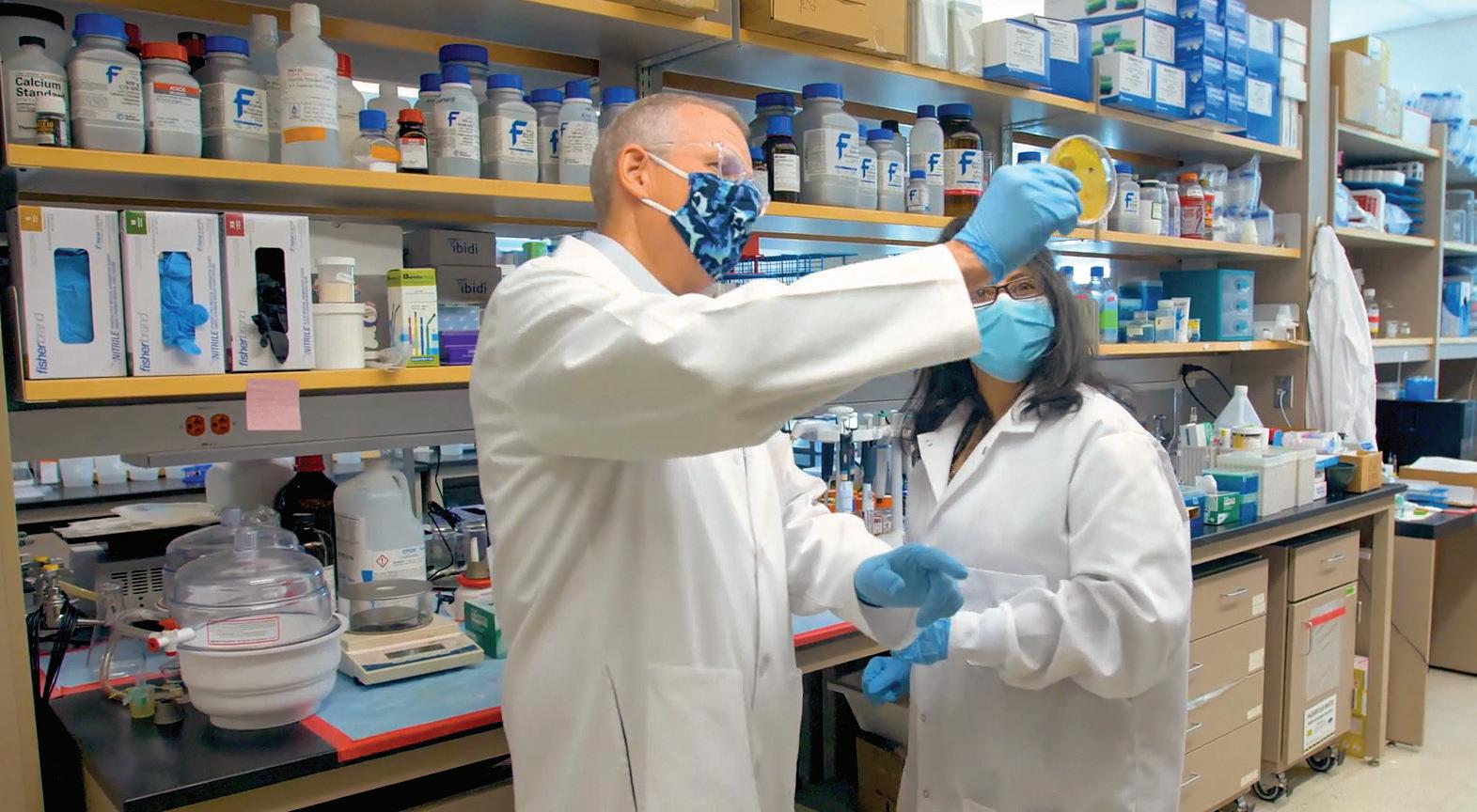
New dental material paves the way for treating cavities
By: Kathy Michel
WHAT YOU NEED TO KNOW
CU Dental researchers created a novel cavity coating material that caught the attention of the National Institutes of Health and the Gates Grubstake Fund who awarded the team $350,000 to continue their research.
ACU Dental trio was nicknamed as the “Dream Team.” Of course, they are not to be confused with the 1992 U.S. Olympic basketball team of legends like Larry Bird, Charles Barkley, Magic Johnson or Michael Jordan. The researchers’ “court” is in the lab.
Their discoveries and hard work have paid off, creating something that even they couldn’t believe, an impressive defensive strategy: a dental coating that inhibits bacteria that causes dental cavities. It also sheds bacterial biofilms and helps regenerate dental pulp that houses the connective tissue, blood vessels and cells in the center of the tooth. This discovery will have a large impact as nearly half of the world’s population experience dental cavities.
20 UNIVERSITY OF COLORADO SCHOOL OF DENTAL MEDICINE
RESEARCH
The novel coating material that was developed at CU is made from acrylated hydroxyazobenzenes (AHA). While it doesn’t necessarily roll off the tongue, it does help keep the oral cavity clean.
“We have created a genus-specific antibiotic that does not exist in medicine or dentistry,” shared Mike Schurr, PhD, associate professor of Immunology and Microbiology.
The impressive development has also caught the attention of the National Institutes of Health and the Gates Grubstake Fund who awarded the team $350,000 to continue their research.
The CU Anschutz trio who has come up with this discovery include:

• Devatha Nair, PhD, assistant professor in the Department of Craniofacial Biology;
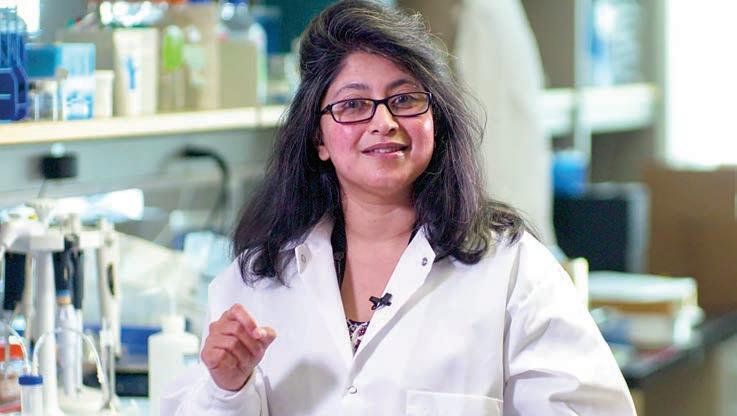
• Mike Schurr, PhD, associate professor of Immunology and Microbiology; and
• Chaitanya Puranik, PhD, MDS, MS, BDS, clinical assistant professor in Pediatric Dentistry.

“It’s not too often that you have a microbiologist, a dentist and a material scientist working together,” said Schurr. “It’s an incredibly versatile team.” Each member brings a unique perspective to the research given their different medical and dental specialties.
The team discovered that when the AHA dental coating was applied to the tooth, the coating killed cavity-causing bacteria. All traditional dental cleaning products such as mouthwashes may kill a few bacteria, but the dead bacteria remain.
“We designed the material such that when it interacts with light, it moves at the molecular level
to disperse biofilms and inhibit bacterial attachment,” said Nair. “The unexpected aspect of the material was its ability to selectively inhibit bacteria that cause dental caries and its regenerative potential in dentistry.”
The team thinks that their novel innovation, the AHA coating, will be a paradigm shift in the practice of dentistry.
“There is not a single dental material in dentistry that is this versatile; the AHA coating is an exception,” said Puranik. “While preventing dental caries and dispersing biofilm, it has the potential to be used as a filling material that can be placed directly in dental pulp to initiate formation of dentinal ridge. This in itself is highly rare for any filling material in dentistry.”
The AHA coating has other advantages over current dental materials, such as low cost, no internal staining or tooth resorption and ease of application with fewer steps, which reduces chairside time. In addition, the AHA coating prevents the formation of dental plaque and secondary cavities around existing fillings. The icing on the cake is its dental pulp regenerative potential.
The “Dream Team” is committed to continue their research and work with CU Innovations to explore wider potential for application of the AHA coating. The researchers shared that this coating has more potential in the field of dentistry and medicine—for instance, preventing strep throat because of the way it kills off bacteria. They are also exploring the application of the AHA coating for cleaning and sterilization of endoscopes and catheters.
21 FIFTY YEARS OF INNOVATION • 1973–2023
WE HAVE CREATED A GENUS-SPECIFIC ANTIBIOTIC THAT DOES NOT EXIST IN MEDICINE OR DENTISTRY.
WATCH THE VIDEO
to see how CU Dental researchers pave the way for treating cavities.
Mike Schurr, PhD, and Devatha Nair, PhD, work in the lab together, developing a new dental material.
CU Anschutz Dental Researchers Molding the Future of 3D Printing
New materials could lead to better dentures, crowns, for patients
By: Matthew Hastings
Researchers at the University of Colorado School of Dental Medicine (CU SDM) are exploring a new frontier in 3D printing— developing new and more durable materials designed specifically for inkjet printing that can be made quickly and customized for each patient.
CU Anschutz Today sat down with Jeffrey Stansbury, PhD, and Kyle Sorensen (DDS ’25) to discuss their team’s research and what the future holds for 3D printing in dental medicine.
What is the current state of 3D printing in dentistry?
Jeffrey Stansbury, PhD: 3D printing is taking off quite dramatically in the dental profession. While it’s still a minority of what’s going on, it is rapidly building and is expected to eclipse the reductive milling approach for digitally derived dental device manufacturing in the not-too-distant future.
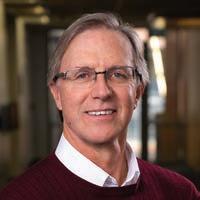

Right now, the materials are the biggest holdup, and that means that most of what’s being printed are dental models—replicas of the patient’s teeth for example. So, while there’s a big need to achieve higher-performance 3D printable polymers that are suitable for long-term clinical function, here we’re trying to leapfrog standard 3D printing techniques and enable the production of fully functional, strong and durable dental devices produced via multi-material inkjet printing
Kyle Sorensen (DDS ’25): In dentistry (with current 3D printing), we can do treatment planning, and you can get a record of the oral cavity as well. However, these study casts or molds aren’t used for direct dental application—it’s just a snapshot of the patient’s mouth.
You can use these casts and molds for various applications, such as designing surgical guides or to create guards that prevent teeth grinding. But the cool thing our project is forwarding is the potential to create intraoral devices, such as dentures, bridges or implants, that can be used on a daily basis by patients.
What are the benefits of 3D printing for dental applications?

Stansbury: It has so much benefit in terms of cost for delivery, speed of delivery, efficiency of material use, all sorts of things.
It’s the ability to 3D print very high-resolution, patient-specific design, which is just ideally suited to what 3D printing does. Mass customization is effectively the terminology for what 3D printing can accomplish. This would be permanent fixed or removable full dentures and removable partial dentures as well as crowns and bridges. It’s all about access to high-performance materials and the ability to 3D print those materials at very high resolution.
22 UNIVERSITY OF COLORADO SCHOOL OF DENTAL MEDICINE
RESEARCH
Kyle Sorensen (DDS ’25)
Jeffrey Stansbury, PhD
What is 3D inkjet printing?
Stansbury: It’s like an inkjet color paper printer, where you can get any blending of color on the fly. What we’re after is to be able to precisely jet droplets of multi-materials to get final unified polymers with localized control of material properties and aesthetic appearance to replicate differences between the gums and the teeth, for example.
This is different from conventional 3D printing used now in dentistry—vat-based printing—where you basically create an object layer by layer as it is lifted out of the vat. We are pushing out new materials that well exceed what’s possible with current vat-based printing and even more dramatically advancing jettable materials.
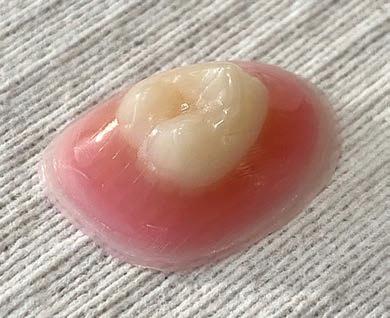
Can you explain the science behind these new materials and how they differ from existing 3D-printing materials?
Sorensen: Existing polymeric materials widely used in dentistry typically combine chemically bonded network structure along with secondary interactions that add to strength and toughness. A good example is urethane dimethacrylate (UDMA) where the methacrylate groups react to produce the basic polymer network, and the self-association of the urethane groups contributes to the overall performance. However, UDMA doesn’t work for 3D inkjet printing because the association between the urethane groups that is positive in the polymeric state drives up the ink viscosity in the pre-cure state where the well-controlled small droplet jetting must take place.
Our new CU-patented materials are monourethane dimethacrylates (MUDMAs) that offer much lower viscosities than UDMA before polymerization yet present equivalent mechanical properties in the final polymers. We then coupled our MUDMAs with a second monomer that preferentially interacts with urethane groups to bring the ink viscosity down to the jettable range while also enhancing the reinforcing effects in the final polymers to achieve mechanical properties that appear to be well suited to clinical challenges in dentistry.
Another interesting result is that in addition to being much more tough and resilient than what’s currently available in the inkjet platform, our new materials are much more temperature tolerant so they won’t deform in shape when exposed to hot foods or liquids. So, in addition to being able to stand up more to normal dietary activities, these are very strong and flexible materials that can be accurately constructed using multi-material inkjet printing.
How will determining sizing and fit for these kinds of devices work going forward?
Stansbury: For the necessary digital design of a desired device, there are two approaches that you can take. One is you can do an intraoral scan with an imaging tool. Again, it’s not a wand, but you carefully move this around in the patient’s mouth and it captures a digital three-dimensional map of the soft and hard tissues there.
There aren’t many groups that are doing that right now, but that is another coming attraction for dentistry. What’s typically done now is you get a standard dental impression taken, you make a model of the mouth, and then you digitally scan that model.
It adds an extra step and time. At every step along the pathway, there’s some degree of uncertainty. So you get less and less precision as you make copies of copies going forward. But that’s how you get the three-dimensional digital image that then allows local or remote construction of the 3D printed device.
Dentists are good at thinking in both the positive and the negative dimension—making a negative model that creates a mold that I can fill, and then it becomes the positive. This always adds to my level of appreciation for what dentists do—to be able to think in those multidimensional terms, as well as being able to work with a mirror and do the right thing in the right place.
Where do you see your research going next on this topic?
Sorensen: I think the next steps would be to test the biocompatibility of these materials and make sure they’re safe for clinical application. And then also developing a wider range of materials with not just strong mechanical properties, but ones that are highly flexible, with lower stiffness.
You might want to have materials that are softer and more flexible on the gum surface. The next step would be identifying and developing materials for those applications as well. What’s interesting is that with a 3D inkjet printer, you can actually blend different materials with more extreme differences in properties to get an intermediate property.
So you might take something that’s really rigid and strong and blend it with something that’s a little bit more flexible. This is achievable because the droplets delivered by 3D inkjet printers are picoliter sizes. So you can create materials with graded functional properties that behave more similarly to biologic tissues. Stansbury: Yeah, what I see coming is the ability to do both the aesthetic and the mechanical blending along with all sorts of different engineering aspects that take advantage of the multimaterial printing. So we can make something stiff in one direction, but flexible in the other, which again is not something that’s doable in any of the other current modes of 3D printed material manufacture.
This is opening lots of doors where design engineering, materials science and the 3D print processing can all be brought together and have some appliances for patients that are costeffective, rapidly developed and offer the best materials and performance available. If we can meet that, then we’ve solved a lot of problems. It’s very exciting.
23 FIFTY YEARS OF INNOVATION • 1973–2023
A simple denture tooth button that was printed as a proof-of-principle demonstration of the new materials being developed at the SDM.
Weslie Williams
Program Assistant, Department of Restorative Dentistry
Weslie Williams has been part of the CU Dental community since birth. “I feel like I’ve grown up with this school. My mom worked here for 40 years in patient accounting, so she would take me to work with her sometimes after school. I went to high school just two miles down the road. I got to know a number of faculty before I even started working here.”
Today, Williams works directly with some of the same faculty, including Dean Denise Kassebaum, DDS, MS; Lonnie Johnson, DDS, PhD; Daniel Wilson, DDS; and others. She started part-time in the sterilization lab under Professor Emeritus Robert Greer, DDS, ScD, transitioned to a full-time position coordinating clinical schedules and finally made her way to the Department of Restorative Dentistry in 2015. From administrative assistant to program assistant, she’s grateful for the opportunity to grow continually in her career here at the school.
“When I first started, I didn’t know anything about dentistry. I’ve learned a lot in this department—I’m never bored. I’ve been most excited about venturing into digital dentistry.”
In addition to her daily responsibilities supporting faculty and students, Williams works with Associate Professor David Gozalo, DDS, MS, printing 3D models, milling in-house crowns and completing treatment plans in various software programs.
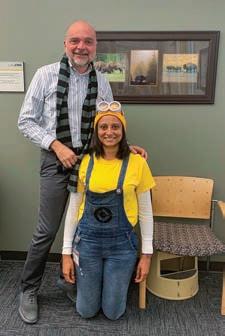


In 2018, Williams and Gozalo produced the first 3D-printed model at the school.
“In the restorative department, with digital dentistry, we have come a long way. We didn’t do any of this 10 years ago. We had one digital scanner, and now we have eight. We’re working in multiple different treatment planning software programs. We have 3D printers and a large milling machine in the school. All of this, plus the opening of the DASH, is a huge upgrade from where we started.”
And this is only the beginning. Williams, Gozalo and others are constantly experimenting with new ideas. The most recent challenge has been attempting to design and mill one-piece dentures. Williams said, “We essentially get a block of material that has both the pink for the gingiva and the white for the teeth. Then using 3D scans of the patient’s mouth, we can design and mill the complete denture without having to cement teeth and gingiva together.” This allows for a stronger denture with minimal manual work before delivery. “It’s just one piece, and it should fit perfectly in the patient’s mouth. That’s what we’re aiming for.”
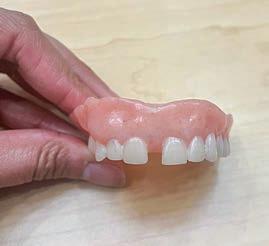

24 UNIVERSITY OF COLORADO SCHOOL OF DENTAL MEDICINE
STAFF SPOTLIGHT
PHOTOS FROM TOP: Weslie Williams and her mom Holly Jones volunteering to hand out promotional gifts at a Colorado Rockies game in May 2017. // David Gozalo, DDS, MS, and Weslie Williams as Gru and a minion from Despicable Me for Halloween 2019. // The first 3D print (January 2018) and occlusal guard (March 2018) at the SDM. // The first in-house milled denture for an SDM patient in March 2023.
STAFF SPOTLIGHT
Jaymil Patel, MBA Director of Infrastructure and Technology Services
How do you keep hundreds of devices up and running so faculty, staff, residents and students can continue teaching, learning, studying, researching, sharing and providing patient care with almost zero SDM systems downtime for more than a decade? It starts with the network servers. It also takes a village—a dedicated team led by SDM Director of Infrastructure and Technology (IT) Services Jaymil Patel, MBA.
“IT is constantly changing,” said Patel. “We are always looking at newer applications and processes to improve. In my 14 years here, the most impactful change I’ve been a part of was bringing more than a dozen physical servers from central IT to the SDM server room. This helps both clinical and non-clinical departments because we can manage everything ourselves and avoid unnecessary or excessive downtime. We’ve had no downtime since 2010 for the SDM systems we manage, and I’m most proud of that.”
Originally from India, Patel moved to the United States in 1999 and earned his bachelor’s degree in computer and information sciences with a focus on management. When he first came to the SDM in 2009, he was the third employee in IT and only worked part-time as a temporary hire. The central Office of Information Technology managed IT services for all schools on campus, so minimal support was dedicated to the dental clinics, which often require faster response times than classrooms.

Patel worked his way up to director in just three years. Since then, Patel and his team have made several impactful changes to the school: IT services were brought in-house to ensure full-time coverage during clinic hours; physical servers were moved from central IT to the dental school server room; the team expanded from two to eight full-time employees, plus four student assistants; and a ticketing system was introduced to streamline and prioritize service requests.
The IT team works on anywhere from 30 to 100 projects weekly. “My team and I get to be advocates for our colleagues. We find solutions and ways to improve, and we couldn’t do that without administrative support.”

Patel credits his past business experience for his strong work ethic and leadership mindset. “It has given me the tools to work with my team and our clients.” He previously owned a liquor store in Albany, New York, and a hotel in Indianapolis, Indiana.
“When I moved to Colorado, I was looking for a business, but it was 2008, so it wasn’t a great time.” He learned about the parttime IT job at the SDM through his wife, Pallavi Parashar, DDS (ISP ’07), BDS, who had recently graduated from CU Dental and joined the faculty. She now teaches and has a private practice in Canada.
Patel said he is the first in his family to have a job like this. “My father, grandfather and great-grandfather all owned businesses, and my cousins teased me initially for doing something different, but I enjoy what I do here. I’m always hungry to learn, so I can continue to improve, not only for myself but for my family, my team and the school too.”

25 FIFTY YEARS OF INNOVATION • 1973–2023
Some of the IT team gathers on World Smile Day in October 2022. Left to right: Jaymil Patel, MBA, Thi Nguyen, Brendan Joines, Chris Lim, Erik Cantor and Caesar Nguyen.
Jaymil Patel and his wife, ISP alumna Pallavi Parashar, DDS (ISP ’07), BDS, outside the dental school.
Abby Jaquez, CDA, EDDA

Diagnostic Procedure Technician Supervisor
From Alaska to Aurora, Abby Jaquez, CDA, EDDA, is grateful her career has taken her to many places. One of the most memorable was working with a pediatric dentist in Barrow, Alaska, caring for Alaska Native children. She said, “The children were adorable, and the parents were so appreciative to receive dental care for their young ones. Plus, I received my polar bear patch by jumping into the Arctic Ocean. It was frigid!”
A Coloradoan, Jaquez loves the outdoors; in the summers, you will find her hiking in the mountains around lakes or chasing waterfalls everywhere she travels. She enjoys exploring nature, teaching students and working with children.
“I always knew I wanted to work in healthcare,” she said. “I pursued dentistry and have been in the field in different aspects for 40 years.” Twenty-six of those years have been at the University of Colorado School of Dental Medicine (CU SDM) as a dental assistant, a supervisor and a technician in radiology.

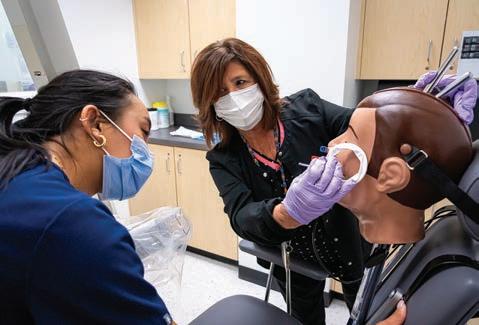
Teaching students how to take good radiographs is one of Jaquez’s proudest accomplishments at the dental school. She said, “I will see doctors I taught years ago, and they will say things like, ‘You taught me how to get a distal projection, and now I teach it to my staff.’ It is so satisfying to help students reach their career goals.”
Before the SDM, Jaquez worked in the dental clinics at Children’s Hospital Colorado for 12 years, where she developed a strong skillset working with patients who may have difficulty staying calm and still long enough to acquire a satisfactory image. Experience like this gives her a unique perspective when demonstrating helpful tactics to students.
Jaquez continues to learn and teach using ever-changing technology, from the days of film-based images at the old building on 9th Avenue and Colorado Boulevard to digital images such as cone-beam computed tomography (CBCT) scans.
“I am grateful for the professional opportunities and support provided to me throughout my career here and am blessed to have worked with many amazing staff, students, residents and faculty.”
26 UNIVERSITY OF COLORADO SCHOOL OF DENTAL MEDICINE
Abby Jaquez, CDA, EDDA, demonstrates to Clara Nghiem, DDS ’23, how to take a radiograph using a direct sensor at the SDM in March 2023.
STAFF SPOTLIGHT
Abby Jaquez explores the incredible mountains and glaciers during her time in Alaska.
Serving Colorado Communities
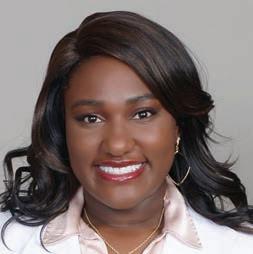

Perspectives from Advanced Clinical Training and Service (ACTS) Program Participants
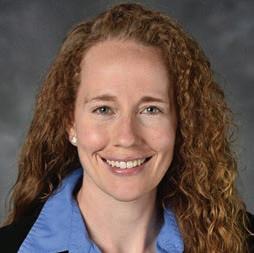
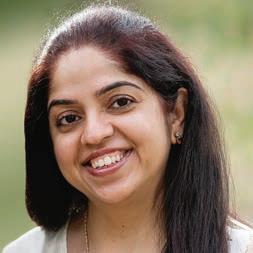 By: Laura Ramsey
By: Laura Ramsey
When alumni and students are asked about the Advanced Clinical Training and Service (ACTS) program, many share that it was one of the most memorable experiences in the Doctor of Dental Surgery (DDS) curriculum at the University of Colorado School of Dental Medicine (CU SDM).
The ACTS program has served as a national service-learning model for dental schools in the United States for nearly 40 years. The program was created and implemented in 1986 by former and late dean Lawrence H. Meskin, DDS, MSD, MPH, PhD. ACTS was one of the first programs of its kind to immerse dental students in under-resourced communities. It gives students an opportunity to have extended rotations, adding to the dental workforce at community health centers across Colorado, and providing them with life-changing education and additional clinical experience before graduation.
Many students say ACTS was a big factor in choosing CU SDM. More than 35% of the 87 preceptors in these community health centers are SDM alumni and graduates of the ACTS program. Today, the ACTS program remains the centerpiece of the dental school’s legacy of commitment to community engagement and the dental curriculum.

27 FIFTY YEARS OF INNOVATION • 1973–2023
COMMUNITY
A Passion for Helping People
“My exposure to real-world dentistry in the United States was through my ACTS rotations. I was always passionate about helping people, and discovering the need right around me is what made me want to go into public health dentistry,” said Manisha Makhija, DDS (ISP ’14), BDS, who grew up and became a dentist in Mumbai, India. “I have always been in love with dentistry, and seeing the difference I can make in this community is what keeps me going. I know this is what I’m meant to do.”
Now Makhija is an ACTS preceptor and dental director at the Worthmore Clinic, which serves more than 6,000 refugees in surrounding communities. She has been an integral part of the Worthmore Clinic since its early days, when co-founders Frank and Carolyn Anello, RDH, posted on Craigslist looking for a dentist to join the team.
What started as a two-chair dental clinic with donated materials now serves 35 to 40 patients daily with 12 chairs and a staff of 20, including four SDM alums: Tasos Belegratis, DDS ’05; Cori Morris, DDS ’21; Troy Markgraf, DDS ’22; and Makhija leading the team.

“Our staff and our patients make up such a beautiful, diverse community,” said Makhija. “This is great exposure for students to see what dentistry and patient needs are like in different parts of the world.”


Paving a Path to Public Health
“Public health has been my jam from the very beginning,” said Jacqueline Merz, DDS ’23, MPH ’23 “One of the main reasons I wanted to go into dentistry is because I want to serve populations with limited access to care.”
Merz said her experience in the ACTS program reinforced her passion for helping people. “It challenges us to dig deeper, to understand how much someone’s background and their culture can impact their care.” After completing her ACTS rotations, she learned, “You might have patients who have never been to the dentist, or who don’t speak English as their first language, or who are in a lot of pain. You have to be adaptable. You have to be comfortable with being uncomfortable.”
Merz is grateful for how far she’s come in her dental career. “I feel lucky to have learned from some great faculty and great preceptors,” she said. “It’s kind of like cooking; I’m able to pick tips and tricks that I like from different people and create my own little cookbook.”
28 UNIVERSITY OF COLORADO SCHOOL OF DENTAL MEDICINE
TOP: Some of the Worthmore team celebrate the newly expanded clinic in February 2023. Left to right: Co-Founder and Executive Director Frank Anello; SDM Associate Professor and former ACTS Program Director Tamara Tobey, DDS ’92, MA; Dental Director Manisha Makhija, DDS (ISP ’14), BDS; ACTS Preceptor Cori Morris, DDS ’21; Co-Founder and Clinical Program Director Carolyn Anello, RDH; and ACTS Preceptor Michael Plous, DDS.
BOTTOM: Manisha Makhija with her husband and children.
Patrick Mugabe, DDS ’23; Jacqueline Merz, DDS ’23; MPH ’23, Sarah Ingah, DDS ’23; Thi Le, DDS ’23; and Thuy Trang, DDS ’23, celebrate together at their white coat ceremony in 2021.
“My parents have always encouraged me to do new things and see new things,” said Wyatt Nguyen, DDS ’23. “My dad is a dentist, but I hadn’t considered that path for myself until I realized how much of a positive impact he has on his patients.”
Nguyen rotated to seven ACTS sites during his senior year, met dozens of patients, dentists and staff, and said every experience was rewarding in its own way.
“I enjoyed my time in the San Luis Valley, seeing how much people love living there and the community they’ve built. I’m grateful to have helped them in some way.” At the Colorado Coalition for the Homeless, he said, “I’m doing the most good I’ve done in my whole life. Getting people out of pain makes me feel good.”
Many ACTS sites are Federally Qualified Health Centers that serve patients with social determinants of health that affect access to care. “It’s a vicious cycle,” Nguyen said. He hopes, one day, to be an advocate for legislation to increase access to care.
Community Health as a Career
“The ACTS program spoke to me as an aspiring dentist; it’s why I chose CU Dental,” said Stacey Robben, DDS ’16. As a student on rotation at Valley-Wide Health Systems, she met a hygienist who had a remarkable commitment to oral health. “It struck me. I knew that’s what I wanted to do.”

Seven years later, Robben is now chief dental officer at Valley-Wide. “I get to be an ACTS preceptor and stand next to current dental students as they complete their first surgical extractions. They’re full of passion and excitement, and I love watching them learn and grow. It’s a full-circle, rewarding feeling.”

Robben’s advice for future dentists is to keep an open mind. “Community health doesn’t have to be a stepping stone; it can be a career. There are so many benefits. You get to build positive relationships with patients, collaborate with other providers and work towards creating a sustainable future.”
A special thank you
to the following dental organizations. We are proud to work with you.

29 FIFTY YEARS OF INNOVATION • 1973–2023
“I’m doing the most good I’ve done in my whole life.”
TOP ROW: Noah Barrett, DDS ’23; Jeffrey Gius, DDS ’23; Logan Aunon, DDS ’23; Brendan Reich, DDS ’23; and Zane Khattak, DDS ’23. BOTTOM ROW: Hayden Smith, DDS ’23; Wyatt Nguyen, DDS ’23; and Jacob Taylor, DDS ’23.
Colorado Dental Association • Delta Dental of Colorado • Metropolitan Denver Dental Society Delta Dental of Colorado Foundation
Alumni Share Their Journeys to Dental School and Beyond

Highlighting our esteemed community and the experiences that helped shape them and others
By: Kathy Michel and Gaby Ferreiro-Chavez
With more than 3,200 University of Colorado School of Dental Medicine (CU SDM) alumni, each has a unique journey into dentistry.
Whether it started with a family member or simply a dream, many SDM alumni are now paving the way for future generations.
MY JOURNEY REPRESENTS WHAT HAPPENS WHEN PEOPLE ARE GIVEN A CHANCE TO CONTRIBUTE AND SUCCEED IN THIS COUNTRY.

30 UNIVERSITY OF COLORADO SCHOOL OF DENTAL MEDICINE
The American Dream Emanouela Carlson, DDS ’09
Diplomate, American Board of Endodontics
 Associate Professor of Endodontics
Chair, Department of Diagnostic Sciences and Surgical Dentistry
Associate Professor of Endodontics
Chair, Department of Diagnostic Sciences and Surgical Dentistry
Chair, Division of Endodontics
CU School of Dental Medicine
Hometown: Sofia, Bulgaria
The path to dentistry for Emanouela Carlson, DDS ’09, may be reminiscent of the American Dream. Carlson described her upbringing as “humble beginnings as an immigrant in America.”

“I was born in Sofia, Bulgaria, into a family of civil engineers. I spent my early childhood in Iraq, where my parents were part of the international team that built the largest expressway system in the Middle East,” Carlson shared. “That period represents an incredibly fond, interesting, happy and adventurous part of my upbringing. I was one of few children in this environment; we did not have access to a traditional school framework and had to be home-schooled. The beauty was how much time we had to be carefree as kids.”
Carlson recalled she would “stay out of trouble” by working with her father, a radio enthusiast. “He frequently enlisted me to help him build transistor radios. This cultivated a natural affinity for working with my hands, as I learned to use hand tools proficiently at an incredibly young age.”

It was later that she learned to speak English fluently. Unfortunately, Carlson and her family’s path took an unexpected and unfortunate turn during her schooling.
“My family was threatened, forcing an abrupt and difficult decision to leave our home and everything we had in pursuit of personal safety. We landed in the United States in December 1994; I was 16 years old with one small suitcase. We were in complete culture shock and found ourselves frantically trying to acclimate,” Carlson said.

She recalled seeing the flashing McDonald’s sign through her family’s motel room, trying to settle into life in America.
“In time, and once we found a place to call home, I was able to start attending high school, and a sense of normalcy gradually set in,” she said. “My journey represents what happens when people are given a chance to contribute and succeed in this country.”
Later in life, Carlson became a patient advocate. She credits her experience and previous role at the national healthcare company as laying the foundation for her career.
“Dentistry aligned with my desire to engage in advocacy, offering professional guidance and assistance through the acquisition of technical expertise suited to benefit my community,” Carlson shared. “Endodontics has provided a secure and independent approach, challenging my intellectual pursuits in a dynamic, highly technical and evidence-based manner. Academic pursuit has complemented my career with joy, professional satisfaction and intellectual creativity.”
That joy and pride go into her teaching. “I am proud to be part of the CU Dental community, to train and work alongside the next generation of dentists.”
She said the SDM community helped nurture her and provided opportunities to take a professional path and ultimately succeed.
“I stand on the shoulders of a giant, whom I have had the privilege to call a colleague and a friend—Dr. Robert Averbach, a distinguished endodontist and educator. I credit Dr. Averbach for recognizing a talent, guiding and empowering me and changing my professional trajectory and my life forever.”
31 FIFTY YEARS OF INNOVATION • 1973–2023
Robert Averbach, DDS, Emanouela Carlson, DDS ’09, and Anthony Carlson at the American Association of Endodontists New Diplomate Reception in 2018.
Inspiring Generations to Come
Jesus Loza, DDS (ISP ’15), BDS
Owner, Charisma Family Dentistry
Hometown: Lima, Peru
“When I was a child, I grew up helping my mother in her pharmacy after school,” said Jesus Loza, DDS (ISP ’15), BDS. “My mother owned and ran the neighborhood pharmacy a few blocks from our home in Lima, Peru. Observing her helping others improve their overall health influenced me forever. I realized I also wanted to impact the lives of others positively.”

Loza shared that his mom and his personal dental experiences inspired him to pursue a career in dentistry. “I explored other medical fields and realized that dentistry was my goal and purpose; a few years later, I applied to a local dental school and received my dental degree.”
He mentioned that his first work experience was in the Peruvian mountains. “It was in one of the poorest towns… [I went] without receiving a salary and carrying my dental equipment twice a week for over a year.”
Loza also worked in the Peruvian Army and private practice. He later became a faculty member at his alma mater Universidad de San Martín de Porres.
“Being faculty motivated me to invest more time in continuing education. I participated in many international conferences in Lima. There, I got a

taste of the advances and how dentistry was evolving in other countries, mainly in the United States,” he shared. “Unfortunately, the resources were limited in Peru to put everything I was learning into practice, and I decided to emigrate to the U.S. to learn. I moved in August 2009, and a new chapter in my life began.”
Loza credited his “new chapter” as transformative, ultimately leading him to the SDM’s Advanced Standing International Student Program (ISP).
“The dental school was very inspiring. Interacting with the DDS students and my ISP classmates was a new experience. Different cultures, backgrounds and beliefs, all mixed, pursuing the same goal, to become an instrument of aid for others.”
Loza said the one part of dentistry that resonates with him and the advice he’d give to current students is: “The patient will trust in you and your clinical judgment; however, it is not always a better dentist who has a higher score on the tests; the real and human dentist is the one who shows compassion and treats others as if treating themselves or a direct family member. That is the real impact you and I will create in our surroundings and the legacy we will leave for future dental generations.”

32 UNIVERSITY OF COLORADO SCHOOL OF DENTAL MEDICINE
LEFT: Jesus Loza, DDS (ISP ’15), BDS, and his wife Patricia Martinez enjoy the CU Anschutz Alumni Heroes Celebration in 2022. RIGHT: The ISP Class of 2015 celebrates together at graduation.
A Lifelong Learner
Joshua Zenon, DDS ’08
Owner, Gateway Park Family & Cosmetic Dentistry
Hometown: Salem, OR
Joshua Zenon, DDS ’08, was inspired to pursue a career in dentistry because of his mother. “She was a nurse for 40 years and introduced me to healthcare at a young age. I was interested in a career in healthcare in high school, and in college I enjoyed studying business.”
After earning a business degree, he started shadowing dentists. “I realized how excited I was by dentistry. I then committed myself to finish the prerequisites for dental school, and my journey began.”

Zenon describes his time as “challenging and exciting” at the SDM. “Entering dental school with a business degree, I didn’t have the same exposure to natural sciences as much as some of my classmates, so the first year was difficult. Every year became more enjoyable. One memorable moment was our transition from the 9th Avenue campus to the Fitzsimons campus after the first year. I remember the cranes moving around in my peripheral vision while in class at the dental school as the education buildings were being built.”
Zenon says his mentor at the SDM, Gene Brooks, DDS, also helped push him out of his comfort zone. “He gave me the confidence to feel comfortable starting my practice.”
After graduating, Zenon started his practice. He continues to evolve as a dentist and a practice owner. “Even 14 years out of school, I’m taking 80 hours of continuing education (CE) this year. So many new advancements in dentistry make our profession so exciting. One recommendation to new graduates is to focus on CE that applies to the patient needs you currently see. You want to be able to use your knowledge immediately so you can gain the confidence to incorporate it into your skillset. Some CE courses sound fun and exciting, ut if you rarely implement the knowledge on your patients, you may never get the opportunity to cement those skills into your toolbox.”

33 FIFTY YEARS OF INNOVATION • 1973–2023
LEFT: Joshua Zenon, DDS ’08, visits with one of his mentees, Jaidaa Elbezry (DDS ’26), at the CU Dental Alumni Reception after the 2023 RMDC. BOTTOM: Joshua Zenon celebrates his graduation with family outside the Fitzsimons building in 2008.
Coming Full Circle at the CU School of Dental Medicine
Kunjan Kakar, DDS (ISP ’10), MS, BDS
Assistant Professor, Restorative Dentistry
CU School of Dental Medicine
Hometown: New Delhi, India
Kunjan Kakar, DDS (ISP ’10), MS, BDS, described her time at the CU School of Dental Medicine as “two of the best years of my life! I loved every moment of it and was sad when I graduated. I enjoyed the learning process and decided to come back.”
Kakar said she grew as a person and provider, learning to look at patients holistically—emotionally, mentally, medically, physically and spiritually. “I had a strong community and felt supported and encouraged to be my best self. The faculty taught me to do the right thing without putting me down or taking away my individuality.”
She had such a positive experience that she wanted to return and teach. The faculty members, now her colleagues, taught her how to go above and beyond and that representation matters.
“I treat students with respect; inclusivity and being a welcoming force are important,” she shared. “I make students feel more like colleagues and less like students; I treat them with the same respect and kindness I was treated with when I was a student.”
Kakar said the faculty members who made and continue to make her experience at the SDM incredible are: former ISP Director Elizabeth Towne, DDS; Robert Averbach, DDS; Brian Brada, DDS ’80; Walter Daniels, DMD; Hong Li, PhD; Lonnie Johnson, DDS, PhD; Brad Potter, DDS, MS; and Daniel Wilson, DDS.
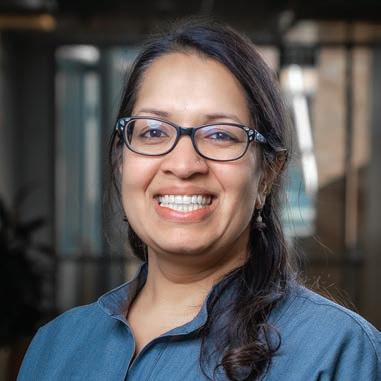
34 UNIVERSITY OF COLORADO SCHOOL OF DENTAL MEDICINE
I MAKE STUDENTS FEEL MORE LIKE COLLEAGUES AND LESS LIKE STUDENTS; I TREAT THEM WITH THE SAME RESPECT AND KINDNESS I WAS TREATED WITH WHEN I WAS A STUDENT.
William Bailey, DDS ’82, MPH, described his dental career as “a delightful, unexpected journey.” He dreamt of becoming a veterinarian but could not afford the tuition. Eventually, he became an elementary school teacher and attended night courses to complete the prerequisite courses needed to apply to vet school. He said his university changed the requirements, and then he fell short in the credits earned. It was then that a turning point happened.
“A dentist friend of our family suggested applying to dental school, which I did, and, fortunately, I was chosen as a member of the University of Colorado School of Dentistry Class of 1982.”
The school had only been established by the legislature five years earlier. Bailey recalled, “The curriculum was demanding —far harder than I imagined. The faculty members expected the best but were highly supportive.”
He said 25 “top-notch” members of his class became lifelong friends. “Without my classmates, I would not have succeeded. One of my study group members, James DeLapp, DDS ’82, MS, is a faculty member at the SDM developing new teaching approaches. Another member of our study group, Mike Hurtado, DDS, has been the Colorado State Mental Hospital dentist for the past 30 years and remains a close friend. And my current dentist, Deborah Deeg, DDS ’82, also graduated from our class.”
Bailey said a key mentor of his was Rich Call, DDS. “He taught the public health courses and asked our class whether we thought healthcare was a right or a privilege. Only three students thought healthcare was a right, and this fed into my strong personal support of health equity.”
The health equity conversation ultimately became the heart of Bailey’s career. He spent nearly 32 years on active duty as a commissioned officer in the U.S. Public Health Service (USPHS). He spearheaded the development of the first-ever Health and Human Services Strategic Framework on Oral Health with input from more than a dozen federal agencies.
“A Delightful, Unexpected Journey” William Bailey, DDS
’82, MPH
Ret. RADM

Former Delta Dental Endowed Chair in the Prevention of Early Childhood Caries
Former Chair, Department of Community Dentistry and Population Health
Former Director, Center for Oral Disease Prevention and Population Health
Former Assistant Surgeon General and Chief Dental Officer of the U.S. Public Health Service
Hometown: Pueblo, CO
Bailey also worked on prevention initiatives, such as coordinating a sealant program on Guam reaching 18,000 children each year, implementing fluoridation in 15 Native American communities in North Dakota and South Dakota, and serving as a fluoridation expert, educator and principal spokesperson for community water fluoridation at the Centers for Disease Control and Prevention (CDC).
He previously served as Assistant Surgeon General and Chief Dental Officer of the U.S. Public Health Service and acting director of the Oral Health Division at the CDC.
For the last eight years of his 40-year career, Bailey was a professor at the SDM where he worked alongside what he described as “incredibly talented and committed” faculty, administration, staff and students. “It is heartwarming knowing students continue to receive an outstanding dental education at the University of Colorado.”
After all of his accomplishments, the one thing that Bailey is most proud of in his career is seeing others succeed. “Whether this involved student admissions to residency programs, faculty advancement or people finding the job of their dreams, it gave me immense pleasure to assist them on their journeys.”
35
FIFTY YEARS OF INNOVATION • 1973–2023
Hello
FROM THE ALUMNI OFFICE
SAVE THE DATES:
September 29–30, 2023
CU Anschutz All Alumni Celebration
November 19, 2023
CU Night at Zoo Lights
January 2024
CU Dental Alumni Reception at RMDC
GET INVOLVED! CONTACT US:
Gaby Ferreiro-Chavez Alumni Relations Program Manager healthalumni@cuanschutz.edu
The CU Anschutz alumni community is a welcoming and active network of more than 56,000 graduates from all schools on the CU Anschutz Medical Campus. Our alumni are important ambassadors between the university and the greater healthcare community, and vital mentors for our students and recent grads. The CU School of Dental Medicine alumni network comprises more than 3,200 graduates.
This past January, alumni, friends, faculty, staff and students celebrated with us at the CU Dental Alumni Reception at the Rocky Mountain Dental Convention (RMDC), pictured here. We hope you’ll join us for future alumni programming where you can:

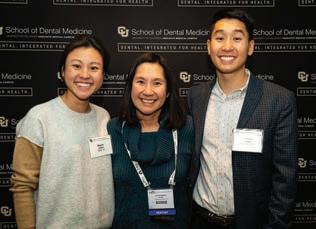
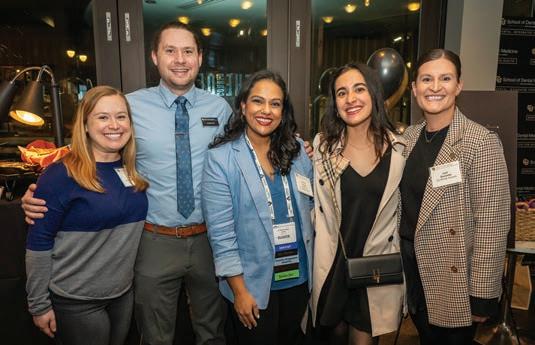

• Connect with fellow alumni;
• Lear n about the latest research and innovation on campus;
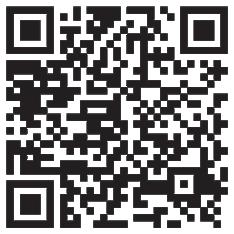
• Take advantage of professional development resources;
• Find support in your personal wellness path;
• Celebrate your successes; and
• Engage in fun social activities.
@cuanschutzalumni
dental.cuanschutz.edu/alumni
36 UNIVERSITY OF COLORADO SCHOOL OF DENTAL MEDICINE
UPDATE YOUR INFO
WEDNESDAY, SEPTEMBER 13
CU Anschutz Medical Campus Block Party
Celebrating YEARS OF INNOVATION 50



THURSDAY, SEPTEMBER 14
AT THE SCHOOL OF DENTAL MEDICINE
In honor of our 50th anniversary, we will commemorate the milestone with celebratory events.
SDM Appreciation and Awards Luncheon
FRIDAY, SEPTEMBER 15















































White Coat Ceremony, CE Day, DASH Tours and Reception
dental.cuanschutz.edu/50years
Mail
SAVE A TOOTH
Save A Tooth with CU Dental
Be an ally for someone suffering from tooth pain and contemplating pulling a tooth because of the cost of a root canal.
We are offering a root canal treatment for the same price as an extraction ($102).
It’s a benefit for everyone. For your patients, they are saving their natural teeth while relieving pain. For you, it is optimizing treatment planning and timely intervention to address patients’ oral health needs and goals.
Dentists looking to refer patients to this program can do so by emailing: sdmreferral@ucdenver.edu You can find information on our website: dental.cuanschutz.edu/saveatooth
We look forward to partnering with you.
PROMO CODE: ENDO23
CU Dental Division of Endodontics

Stop F831
13065 East 17th Avenue
Aurora, CO 80045

 Cody Leong (DDS ’26) and Lajessie Dinh (DDS ’26) collaborate in the new Dental Advanced Simulation Hub (DASH). Read more on page 13.
Cody Leong (DDS ’26) and Lajessie Dinh (DDS ’26) collaborate in the new Dental Advanced Simulation Hub (DASH). Read more on page 13.














































































 By: Laura Ramsey
By: Laura Ramsey









 Associate Professor of Endodontics
Chair, Department of Diagnostic Sciences and Surgical Dentistry
Associate Professor of Endodontics
Chair, Department of Diagnostic Sciences and Surgical Dentistry








































































